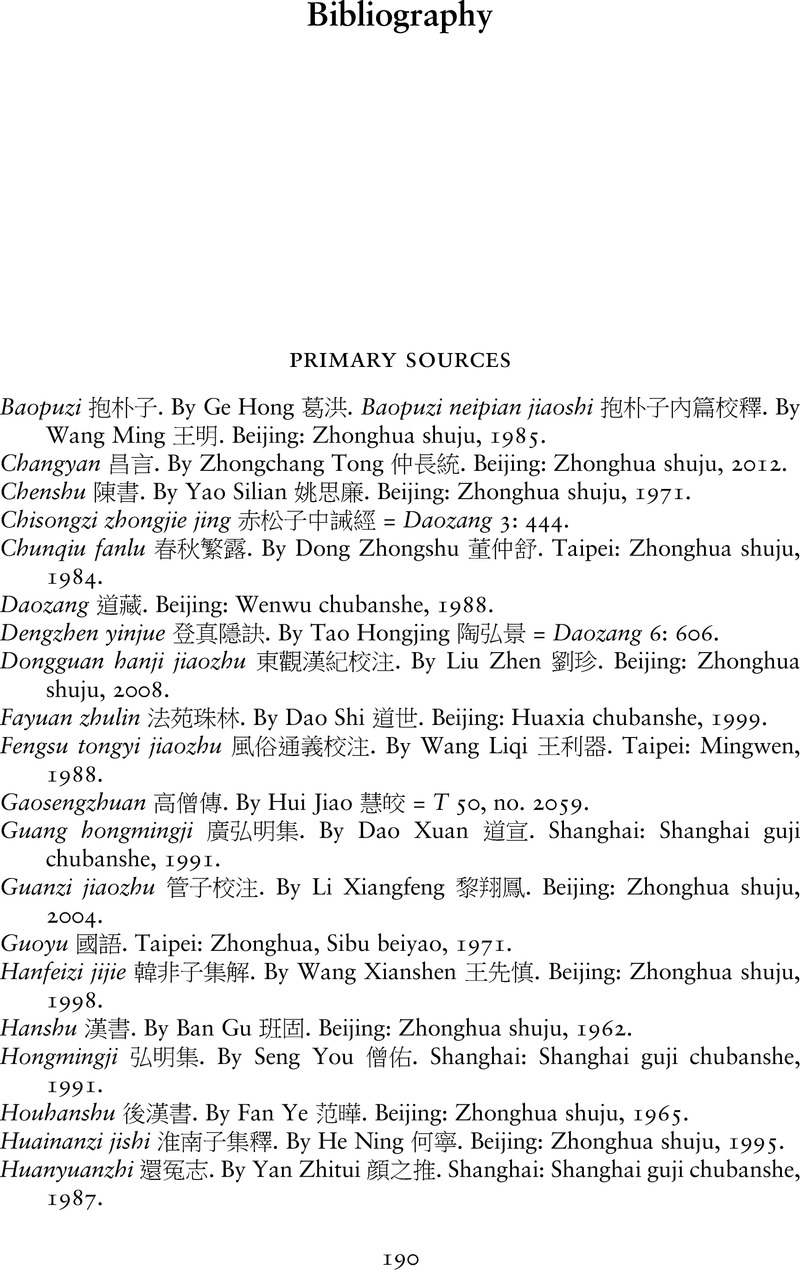Book contents
- Ghosts and Religious Life in Early China
- Ghosts and Religious Life in Early China
- Copyright page
- Contents
- Preface
- 1 Ghosts
- 2 The Emergence of Ghosts in Early China
- 3 Imperial Order and Local Variations
- 4 Stories That Reveal the Dark Corner
- 5 Ghosts in Early Daoist Culture
- 6 The Taming of Ghosts in Early Chinese Buddhism
- 7 Chinese Ghosts in Comparative Perspective
- Bibliography
- Index
- References
Bibliography
Published online by Cambridge University Press: 13 January 2022
- Ghosts and Religious Life in Early China
- Ghosts and Religious Life in Early China
- Copyright page
- Contents
- Preface
- 1 Ghosts
- 2 The Emergence of Ghosts in Early China
- 3 Imperial Order and Local Variations
- 4 Stories That Reveal the Dark Corner
- 5 Ghosts in Early Daoist Culture
- 6 The Taming of Ghosts in Early Chinese Buddhism
- 7 Chinese Ghosts in Comparative Perspective
- Bibliography
- Index
- References
Summary

- Type
- Chapter
- Information
- Ghosts and Religious Life in Early China , pp. 190 - 204Publisher: Cambridge University PressPrint publication year: 2022

